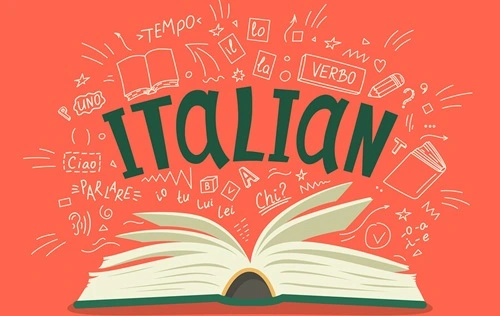In today’s globalized world, learning a new language is more than just a hobby—it’s a valuable skill that opens doors to different cultures, careers, and connections. While some languages are notoriously difficult to learn, others are considered easier, especially for English speakers and those from certain language backgrounds. In 2024, advancements in language-learning tools, apps, and methods have made picking up a new language even simpler. So, let’s dive into the top 10 easiest languages to learn in the world in 2024!
1. Spanish

Spanish has long been regarded as one of the easiest languages to learn, particularly for English speakers. It is the second most spoken language in the world by native speakers, and its popularity is growing rapidly. The language is phonetic, meaning that it is pronounced the way it is written, which makes learning pronunciation much easier. Spanish grammar is relatively simple compared to other languages, and there are fewer exceptions to the rules.
With over 580 million speakers worldwide, learning Spanish in 2024 is a practical choice, and thanks to online tools like Duolingo, Babbel, and language exchange platforms, you can practice speaking Spanish with native speakers from the comfort of your home.
2. Italian

Italian is another easy language for English speakers due to its simple grammar and phonetic structure. Much like Spanish, Italian words are pronounced exactly as they are spelled, making pronunciation relatively straightforward. Italian shares many vocabulary words with English because both languages have Latin roots.
Italian is also a melodic language, and learning it gives you access to rich culture, including art, music, and food. In 2024, with travel returning to normalcy, learning Italian can enhance your experience if you plan to visit Italy’s famous landmarks like Rome, Florence, and Venice.
3. French

Although French has a reputation for being slightly more challenging than Spanish or Italian, it still ranks as one of the easier languages to learn for English speakers. French vocabulary shares a lot of similarities with English due to historical connections between the two languages. Learning French grammar may take some time, especially mastering gendered nouns and verb conjugations, but it becomes manageable with regular practice.
In 2024, French remains a global language, spoken in many countries across Europe, Africa, and Canada. With the growing number of apps, podcasts, and online courses, learning French has become easier than ever before.
4. Portuguese

Portuguese, like Spanish and Italian, is a Romance language, which means it shares many similarities with English in terms of grammar and vocabulary. Portuguese is spoken widely in Portugal and Brazil, with Brazil being the largest Portuguese-speaking country in the world. The language has relatively simple sentence structures and phonetics, making it easier to pick up for beginners.
In 2024, Portuguese is becoming more popular among language learners due to Brazil’s increasing global influence in business, culture, and sports. With a growing number of resources available for learners, Portuguese is a practical and easy language to learn for anyone interested in South America.
5. Dutch
Dutch is often cited as one of the easiest languages for English speakers to learn. The reason is that Dutch and English share many similarities in grammar, sentence structure, and vocabulary. Both languages are part of the Germanic family, making them close linguistic relatives. The pronunciation is not as tricky as some other European languages, and Dutch grammar is less complex than German.
The Netherlands and Belgium are the main countries where Dutch is spoken, and it is a useful language for travel, business, and diplomacy in Europe. In 2024, online resources and language exchange programs make learning Dutch easier, allowing learners to communicate with Dutch speakers across the globe.
6. Swedish
Swedish is another Germanic language that is relatively easy for English speakers to learn. Swedish grammar is straightforward, with simple rules for verb conjugation and sentence structure. Additionally, Swedish shares many cognates with English, meaning that some words sound similar or are identical in both languages. The language also lacks many irregular verbs, which often complicate language learning.
Sweden is a popular destination for students, tourists, and expats, and learning Swedish can open up opportunities in the Scandinavian region. In 2024, platforms like Memrise and LingQ make it even easier to learn Swedish by providing immersive learning experiences.
7. Norwegian
Norwegian is closely related to Swedish and Danish, and like its Scandinavian neighbors, it is relatively easy for English speakers to learn. The grammar of Norwegian is logical and simple, and the language has a melodic quality that makes it pleasant to speak and hear. One of the biggest advantages of learning Norwegian is that once you’ve learned it, you can easily understand Swedish and Danish too, since the languages are mutually intelligible to a large extent.
In 2024, Norway’s high quality of life and its global standing as a leader in sustainability and innovation have made Norwegian an appealing language to learn. There are plenty of resources available online to help learners master Norwegian.
8. Afrikaans
Afrikaans, spoken primarily in South Africa and Namibia, is a language derived from Dutch. It is one of the easiest languages to learn because it has no gendered nouns, a simple grammar structure, and straightforward pronunciation. There are very few irregular verbs in Afrikaans, and it borrows many words from other languages like English, Portuguese, and Malay.
In 2024, Afrikaans continues to be an easy and practical language to learn for travelers and those interested in South African culture. Learning materials for Afrikaans are widely available online, making it accessible to learners worldwide.
9. Indonesian
Indonesian is considered one of the easiest languages in Asia to learn. It uses the Latin alphabet, making it easier to read and write for English speakers. Unlike many other Asian languages, Indonesian is not tonal, meaning that the meaning of a word does not change based on the tone in which it is spoken. The language has a simple grammar structure, with no conjugations, no plurals, and no verb tenses, which makes it ideal for beginners.
In 2024, Indonesia’s booming economy and growing tourism industry have made Indonesian a valuable language to learn. It’s widely spoken across Southeast Asia, and online tools like LingQ and Duolingo have made learning Indonesian easier than ever before.
10. Esperanto
Esperanto is a constructed international language that was designed to be easy to learn. Created in the late 19th century by L. L. Zamenhof, Esperanto has a simple, regular grammar with no exceptions. The vocabulary is drawn from many European languages, and the spelling is phonetic, meaning that words are pronounced as they are written. Esperanto was intended to be a global second language to promote peace and international understanding.
Although Esperanto is not a native language, it has a thriving community of speakers and learners around the world. In 2024, the language continues to attract learners due to its simplicity and the ease with which it can be mastered. There are numerous online platforms, books, and resources for those who want to learn Esperanto.
Conclusion
Learning a new language is an exciting and rewarding experience, and the availability of digital tools and language-learning platforms has made it easier than ever in 2024. The languages listed above are widely regarded as some of the easiest to learn, especially for English speakers. Whether you’re looking to expand your professional opportunities, explore new cultures, or simply enjoy the intellectual challenge, these languages offer a manageable and enjoyable path to fluency.
Remember, what makes a language “easy” is often subjective. Factors like your native language, motivation, and learning style will influence how quickly you can pick up a new language. But with the right resources and dedication, any language can be within reach.

